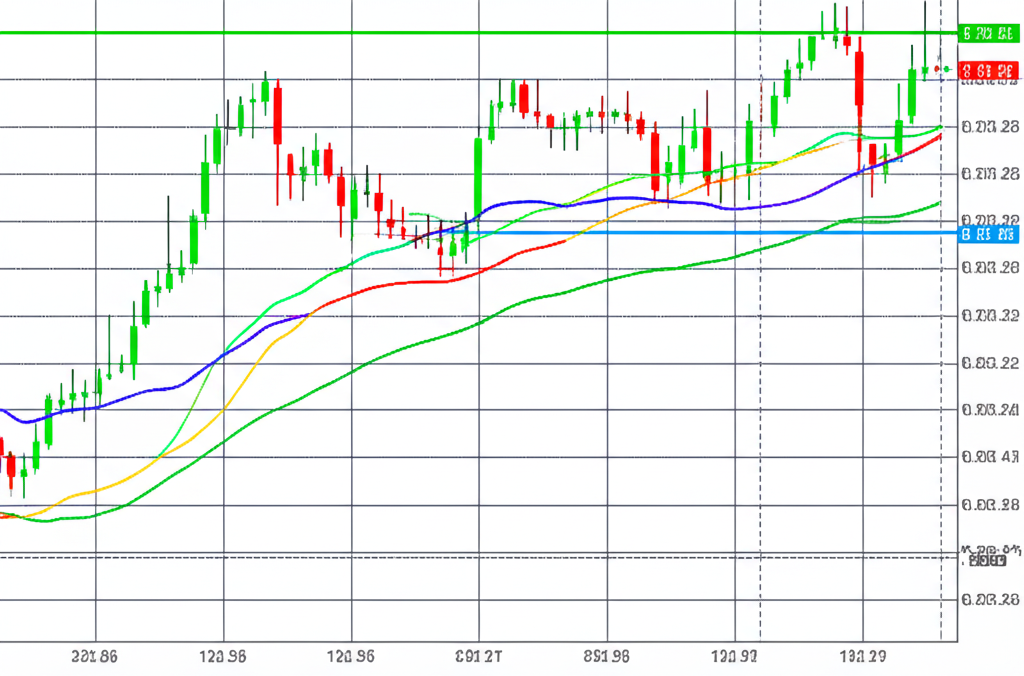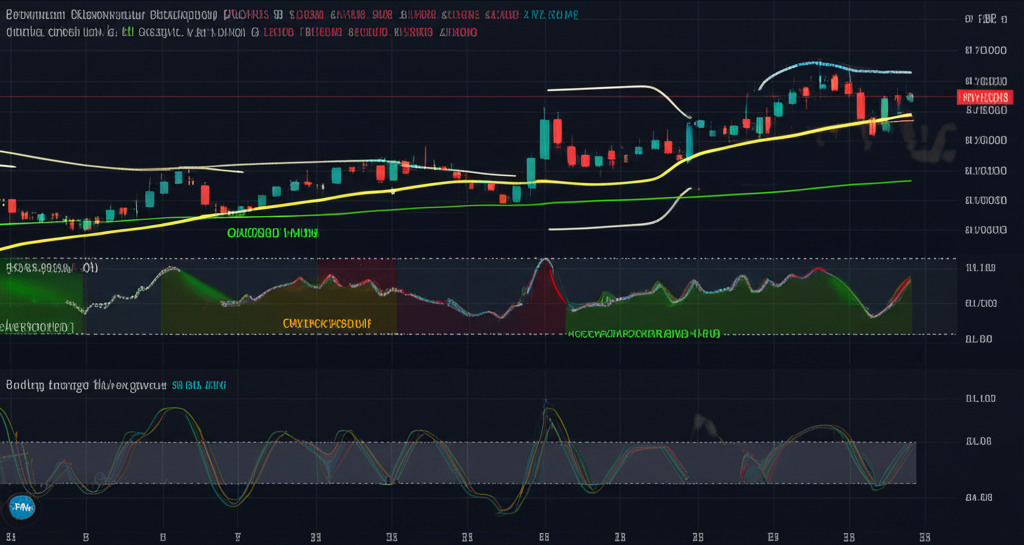Introduction to Scalping Indicators: Your Fast Track to Market Insights

Scalping is one of the most intense forms of trading, where speed, precision, and split-second decisions define success. This high-frequency approach focuses on capturing tiny price movements—sometimes just a few cents—by entering and exiting positions within seconds or minutes. Unlike investors who hold assets for months or years, scalpers thrive on volume and repetition, executing dozens or even hundreds of trades in a single session. In such a rapid environment, raw price data alone isn’t enough. Traders need tools that transform chaos into clarity, turning fleeting market shifts into actionable signals. That’s where scalping indicators come in.
These technical tools act as the nervous system of a scalper’s strategy, filtering noise and highlighting opportunities in real time. They distill complex market behavior into visual patterns—trends, momentum shifts, volatility spikes—that can be interpreted instantly. Whether you’re working off 1-minute candles or slightly longer 5-minute intervals, the right indicators help pinpoint optimal entry and exit zones with surgical accuracy. But more than just useful, they’re essential. Without them, attempting to scalp is like navigating a storm without instruments. This guide explores the core and advanced indicators that form the backbone of successful scalping, offering a clear path to sharper execution and smarter decision-making.
The Core Arsenal: Essential Technical Indicators for Scalping

In the split-second world of scalping, hesitation equals loss. Success hinges on clarity and responsiveness, which is why traders rely on a select group of time-tested indicators. These tools don’t predict the future—they reveal what the market is doing right now, helping traders filter out distractions and focus only on high-probability setups. While no single indicator guarantees results, combining several creates a reliable framework for decision-making. The following are the foundational elements of nearly every effective scalping system, each offering unique insights into trend direction, momentum strength, and potential reversals.
Moving Averages (MA): EMA vs. SMA for Speed and Trends
Moving Averages smooth out price fluctuations over time, revealing the underlying direction of momentum. For scalpers, timing is everything, so the choice between Exponential Moving Average (EMA) and Simple Moving Average (SMA) becomes critical. The SMA treats every price point in its period equally, resulting in a smooth but delayed line that lags behind current price action. That delay can be costly when every second counts. The EMA, on the other hand, places greater emphasis on recent prices, making it far more reactive to sudden shifts.
This responsiveness makes EMA the preferred tool for short-term traders. On fast-moving charts like the 1-minute or 5-minute, scalpers often use combinations such as the 5-period and 20-period EMA. When the shorter EMA crosses above the longer one, it suggests accelerating bullish momentum—a potential signal to go long. A downward cross may indicate bearish pressure building. These crossovers aren’t foolproof, but when paired with other confirming signals, they become powerful triggers for quick entries.
Relative Strength Index (RSI): Spotting Overbought and Oversold Conditions
Developed to measure the velocity of price changes, the Relative Strength Index (RSI) is a go-to oscillator for identifying extremes in market sentiment. Operating on a scale from 0 to 100, RSI values above 70 traditionally suggest overbought conditions, while readings below 30 point to oversold levels. For long-term traders, a standard 14-period setting works well. But scalpers need faster feedback.
By shortening the RSI period to 5 or 7, traders get more frequent signals that align with the pace of intraday swings. This sensitivity allows them to catch reversals before they happen—like spotting exhaustion at the top of a rally or pent-up demand after a sharp dip. One particularly valuable signal is divergence: when price makes a new high but RSI fails to confirm it with a higher peak, that disconnect hints at weakening momentum and a possible pullback. Used wisely, RSI helps scalpers avoid chasing moves too late and instead position ahead of shifts.
Moving Average Convergence Divergence (MACD): Momentum and Trend Reversals
The MACD combines trend-following and momentum analysis into a single, versatile indicator. It calculates the difference between two EMAs—the faster one reacting quickly to price, the slower one providing a baseline—and plots this as the MACD line. A signal line, typically a 9-period EMA of the MACD line, is then overlaid to generate trade cues. When the MACD line crosses above the signal line, it suggests upward momentum is gaining strength. A downward cross warns of bearish acceleration.
The accompanying histogram visualizes the gap between these two lines, offering an early look at momentum shifts. A shrinking histogram, for example, may foreshadow a crossover before it happens. For scalping, adjusting the default settings (e.g., using 6, 13, 9 instead of 12, 26, 9) increases responsiveness, making MACD better suited to fast markets. Traders often watch for MACD crossovers near key support or resistance levels, especially when confirmed by volume surges, to time precise entries.
Stochastic Oscillator: Confirming Momentum and Exhaustion
Like RSI, the Stochastic Oscillator identifies overbought and oversold zones, but it does so by comparing a security’s closing price to its price range over a set period. It consists of two lines: %K, the main line that tracks current momentum, and %D, a moving average of %K that smooths out the signal. Readings above 80 indicate overbought conditions; below 20 suggest oversold.
What sets Stochastic apart is its sensitivity to turning points. A bullish signal occurs when %K crosses above %D in the oversold zone, signaling potential upward momentum. Conversely, a bearish cross in the overbought area may mark a top. Scalpers often use accelerated settings—such as 5, 3, 3—to capture rapid reversals. Because Stochastic reacts quickly, it’s best used not in isolation but alongside trend filters to avoid false signals during strong directional moves.
Bollinger Bands: Volatility and Price Action Boundaries
Bollinger Bands provide a dynamic view of volatility by placing upper and lower bands around a central moving average—typically a 20-period SMA—with the bands set two standard deviations away. As volatility increases, the bands expand; during calm periods, they contract. This “squeeze” effect is highly valuable for scalpers, as tightening bands often precede explosive breakouts.
When price touches or breaches the outer bands, it doesn’t automatically mean reversal—but it does signal that price is at an extreme. In ranging markets, bounces off the bands can offer high-probability mean-reversion trades. In trending environments, sustained movement outside a band may confirm strength rather than exhaustion. The key is context: combining Bollinger Bands with volume and momentum indicators helps determine whether a touch signals exhaustion or continuation. The visual clarity they provide makes them indispensable for reading market tension in real time.
Unlocking Deeper Insights: Volume-Based Indicators for Scalping

Price tells you what’s happening; volume tells you how much conviction is behind it. In scalping, where price can whip around due to algorithmic noise or minor orders, volume acts as a lie detector. A sharp move on heavy volume suggests institutional participation or broad market agreement—making it more likely to persist. The same move on low volume, however, often fizzles out quickly, revealing itself as a “fakeout.”
This makes volume not just supplementary but central to high-confidence trading. It validates breakouts, flags exhaustion points, and uncovers hidden supply and demand zones. By integrating volume-based tools into their analysis, scalpers gain an edge in distinguishing real opportunities from market noise.
Why Volume Matters in Scalping: Confirming Price Action
Imagine a stock surges 1% in 30 seconds. Is it the start of a major move or just a flash spike? Volume answers that question. A surge in volume during a breakout adds credibility—it shows traders are actively committing capital. Without it, the move lacks backing and is prone to reversal. Similarly, a steep drop on unusually high volume might indicate panic selling or capitulation, often preceding a bounce as selling pressure dries up.
Volume also serves as an early warning system. For example, if price climbs steadily but volume declines, that divergence suggests weakening interest—a potential sign the trend is losing steam. Conversely, rising volume on pullbacks can indicate accumulation, hinting at strength ahead. As Investopedia notes, volume is a crucial metric that helps gauge the significance of a price move. For scalpers operating at lightning speed, incorporating volume analysis turns guesswork into strategy.
On-Balance Volume (OBV) and Volume Profile: Advanced Entry Signals
Beyond basic volume bars, advanced tools extract deeper insights:
* **On-Balance Volume (OBV)** tracks cumulative buying and selling pressure by adding volume on up days and subtracting it on down days. When OBV trends upward while price consolidates, it signals silent accumulation—smart money stepping in before a breakout. A divergence where price rises but OBV falls warns of a lack of support beneath the move, often preceding a reversal.
* **Volume Profile** maps how much volume traded at each price level over a given period, creating a horizontal histogram. High-volume nodes (HVN) represent areas of intense activity—potential support or resistance. Low-volume nodes (LVN), in contrast, are “thin” zones where price can accelerate through with little resistance. Scalpers use this to target entries near HVNs for reversals or aim for LVNs for breakout plays, giving them precision beyond traditional chart patterns.
Crafting Your Edge: Multi-Indicator Scalping Strategies

Relying on a single indicator is risky. Markets are too complex, and no tool captures every dimension of price behavior. The real power emerges when scalpers combine indicators across categories—trend, momentum, and volume—to create confluence. This layered approach increases confidence in signals, reduces false entries, and transforms trading from reactive to strategic.
Combining Trend, Momentum, and Volume for High-Probability Setups
The most effective scalping strategies rely on confirmation across multiple dimensions. Consider this practical setup:
1. **Trend Filter (EMA):** Use a 5-period EMA crossing above a 20-period EMA on a 1-minute chart to detect early bullish momentum.
2. **Momentum Check (RSI):** Ensure the 5-period RSI is rising from below 30 or moving above 50, confirming that buying pressure is building.
3. **Volume Confirmation:** Look for a visible spike in volume at the moment of the EMA crossover and price advance. This validates that the move has real market participation.
When all three align, the probability of a successful trade increases significantly. The trend is shifting, momentum is accelerating, and volume confirms institutional involvement. The same logic applies in reverse for short setups. This triangulation method doesn’t eliminate risk, but it stacks the odds in your favor by requiring multiple conditions to be met before acting.
Timeframe Synchronization: Aligning Signals Across Charts
One of the most overlooked advantages in scalping is multi-timeframe analysis. While entries happen on fast charts like 1-minute, the broader trend often unfolds on higher timeframes. Trading against the higher-timeframe bias increases risk; aligning with it improves win rates.
A common technique involves using the 5-minute or 15-minute chart to identify the dominant trend. If price is clearly rising on the 15-minute chart, scalpers focus primarily on long setups on the 1-minute chart. This ensures trades are riding with momentum, not fighting it. Once the directional bias is clear, they switch down to fine-tune entries using EMA crossovers, RSI dips, or Bollinger Band touches—all within the context of the larger move. This dual-layered approach combines macro awareness with micro precision, reducing emotional trading and enhancing consistency.
Optimizing Your Indicators: Settings and Platform Considerations
Indicators out of the box are starting points, not final solutions. Market conditions vary, and so should your tools. A setting that works well for Tesla stock during earnings may fail miserably on EUR/USD during Asian session lulls. True edge comes from customization—tuning indicators to fit the asset, volatility, and your personal trading rhythm.
Customizing Indicator Settings for Different Markets and Assets
Volatility dictates responsiveness. For high-speed assets like meme stocks or cryptocurrencies, shorter periods (e.g., 3–7) on RSI or EMA help capture rapid swings. For more stable instruments like major forex pairs, slightly longer settings reduce whipsaws. Market phase matters too: trending environments favor lagging trend-followers like EMAs, while sideways markets reward oscillators like Stochastic or RSI.
Ultimately, optimization comes through testing. Backtest different EMA combinations—8/21 versus 10/30—and observe how they perform across various assets. Try a 6-period RSI versus a 14-period version and compare signal frequency and accuracy. Some traders prefer aggressive settings for early entries, accepting more false signals. Others value precision over speed. There’s no universal answer—only what fits your risk tolerance and execution style.
Leveraging TradingView for Scalping Indicator Analysis
TradingView has become a cornerstone platform for technical traders, especially scalpers. Its clean interface, real-time data, and extensive feature set make it ideal for fast-paced analysis. The built-in indicator library includes every major tool discussed—from EMAs and MACD to Volume Profile and OBV—allowing instant application and adjustment.
What truly sets TradingView apart is Pine Script, its proprietary coding language. With Pine Script, traders can build custom indicators, automate strategies, or tweak existing ones to match their exact needs. The community script library offers thousands of pre-built tools, many designed specifically for scalping. Features like multi-chart layouts let you monitor 1-minute and 5-minute views simultaneously, while customizable alerts notify you of crossovers, breakouts, or volume spikes—even when you’re away from the screen. While platforms like Thinkorswim offer deep brokerage integration, TradingView excels in flexibility and accessibility, making it a top choice for independent scalpers.
Risk Management and Psychology: The Undervalued Pillars of Scalping Success
Even with perfect indicators and flawless timing, trading can still go wrong—fast. Scalping amplifies both gains and losses, and without discipline, a few bad trades can erase weeks of progress. No amount of technical skill compensates for poor risk control or emotional decision-making. These two elements—risk management and psychology—are the unsung heroes of sustainable profitability.
**Risk Management:**
* **Stop-Loss Orders:** Always define your exit point before entering. Scalpers use tight stops—often just a few ticks away—to limit downside. These aren’t optional; they’re mandatory.
* **Position Sizing:** Never risk more than 0.5% to 1% of your account on any single trade. High-frequency trading means experiencing losing streaks; small bets ensure survival.
* **Profit Targets:** Set realistic goals and stick to them. Scalping isn’t about home runs—it’s about consistent singles. Taking profit early beats holding too long and giving it back.
* **Risk-Reward Ratio:** While some scalpers accept ratios below 1:1, consistency is key. Aim for a positive expectancy over time through high win rates and tight controls.
**Trading Psychology:**
* **Discipline:** Follow your plan. If your indicators don’t align, wait. Avoid FOMO-driven trades or revenge moves after a loss.
* **Emotional Control:** The pace of scalping can be exhausting. Learn to stay calm under pressure. Breathing techniques, routine breaks, and journaling help maintain clarity.
* **Patience:** Not every candle offers an opportunity. Wait for clean, confirmed setups. Forced trades usually lose.
* **Continuous Learning:** Review every trade. What worked? What didn’t? Markets evolve—your strategy should too. According to a study published on BabyPips, effective risk management is a cornerstone of sustainable trading success.
Conclusion: Mastering the Art of Scalping with Indicators
Scalping isn’t just about speed—it’s about structure. Behind every successful scalp lies a disciplined process: identifying trends with EMAs, confirming momentum with RSI or MACD, validating strength with volume, and timing entries across multiple timeframes. The indicators themselves are tools, not crystal balls. Their value multiplies when combined thoughtfully and applied with precision.
But tools alone aren’t enough. The difference between consistent profitability and burnout lies in risk management and mental resilience. No indicator prevents emotional mistakes or replaces a solid trading plan. Mastery comes from repetition, refinement, and the humility to accept losses as part of the game.
By blending technical insight with strategic patience and ironclad discipline, traders can turn scalping from a gamble into a repeatable edge. The journey is demanding, but with the right indicators—and the right mindset—it’s entirely within reach.
Frequently Asked Questions (FAQ)
What is the best indicator for scalping in volatile markets?
In volatile markets, a combination of indicators is usually best. Fast-moving averages (like 5-period

留言